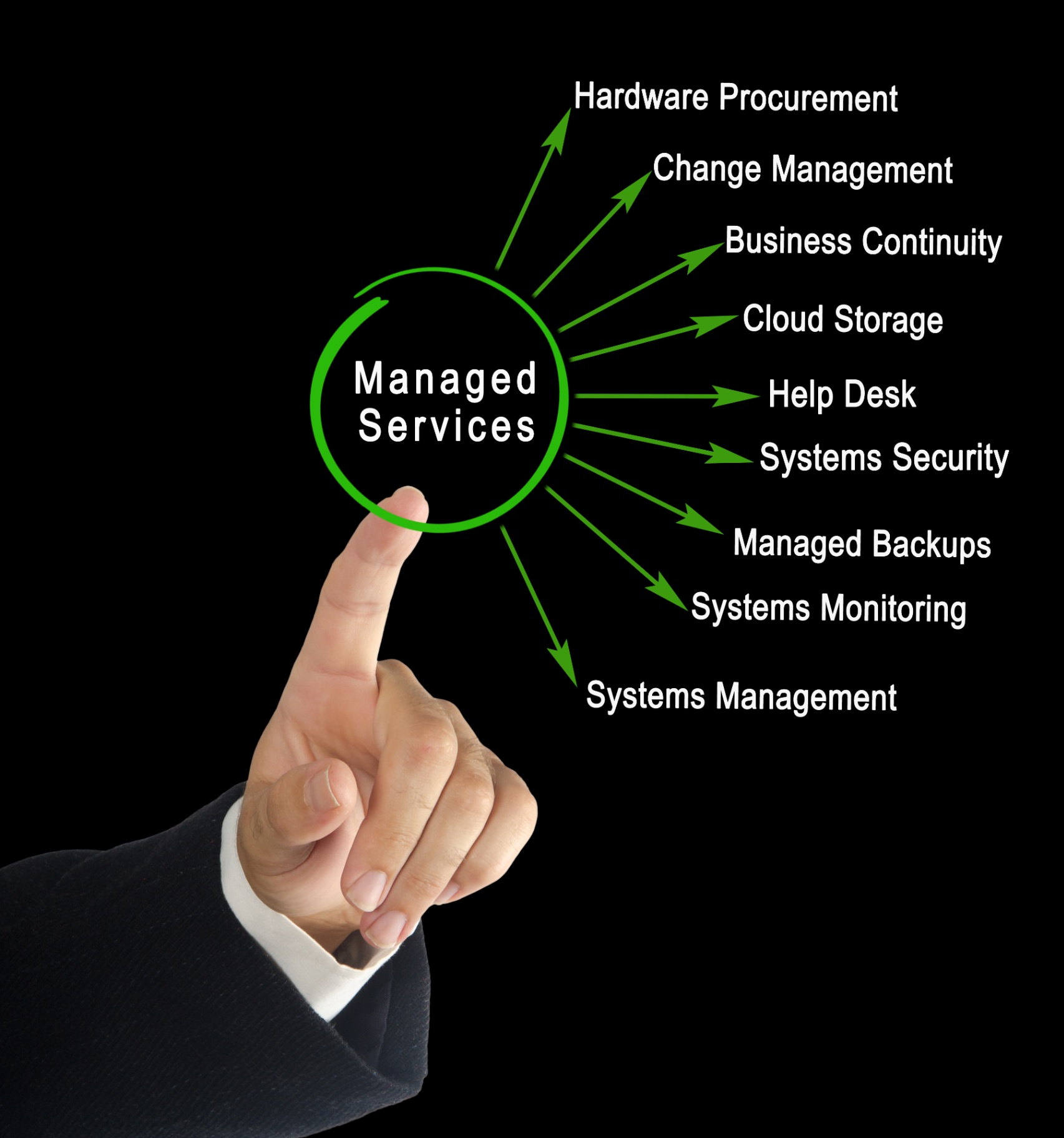Connecticut small business owners face a frustrating paradox: every IT security improvement seems to come with a hefty price tag, while every cost-cutting measure appears to weaken their defenses. But what if this entire premise is wrong?
What if you could actually slash your IT expenses by 40% while simultaneously building the strongest security posture your business has ever had? It sounds impossible, but hundreds of Connecticut SMBs are proving it's not only possible: it's becoming the standard approach for smart business owners who refuse to choose between financial health and cybersecurity protection.
The secret lies in understanding why traditional IT management creates this false choice in the first place, and how affordable managed IT services Connecticut businesses are adopting fundamentally change the economics of business technology.
The Hidden Math Behind Your Current IT Spending
Before we dive into solutions, let's examine the real numbers behind your current IT infrastructure. Most Connecticut business owners dramatically underestimate their true technology costs because the biggest expenses hide in plain sight.

The Personnel Cost Trap
The most expensive line item in your IT budget isn't hardware, software, or service contracts: it's people. A competent IT manager in Connecticut commands an average salary of $170,000 annually. Add benefits, payroll taxes, training, and the inevitable costs of recruitment when they leave, and you're looking at over $220,000 per year for a single position.
But here's what makes this even more expensive: one person can't handle everything a modern business needs. Network security, cloud management, hardware maintenance, user support, compliance monitoring, and backup management require different skill sets. So you either hire multiple specialists (pushing costs beyond $400,000 annually) or accept significant gaps in your coverage.
The Emergency Response Problem
When critical systems fail at 2 AM on a Saturday, what happens? Your in-house IT person gets an expensive emergency call, charging overtime rates while working under pressure to restore systems quickly. A single major outage can cost $15,000-$50,000 in emergency repairs, lost productivity, and rushed replacement equipment.
Even worse, most SMBs experience 3-7 major IT incidents per year. Those "one-time" emergency costs quickly add up to more than a comprehensive managed service plan would cost for the entire year.
The Hidden Inefficiency Tax
Perhaps the most expensive hidden cost is inefficiency. When employees can't work because systems are slow, applications crash, or the network is down, you're paying full salaries for partial productivity. Industry research shows the average SMB loses 42 hours of productivity per employee per month due to IT issues.
For a 25-person company, that's 1,050 hours of lost work monthly. At an average loaded cost of $50 per hour, that's $52,500 in lost productivity every single month: $630,000 annually.
How Managed Services Flip the Economics
Smart managed IT services reverse every aspect of this cost structure while simultaneously improving security outcomes. Here's exactly how the math works:

Predictable Costs Replace Unpredictable Emergencies
Instead of budgeting $170,000+ for personnel plus unknown emergency costs, comprehensive managed services typically run $4,000-$8,000 monthly for most Connecticut SMBs. Even at the higher end, you're looking at $96,000 annually: a savings of $124,000 compared to hiring internally.
But the real savings come from converting unpredictable emergency expenses into predictable monthly fees. Those 3-7 major incidents per year? They're now covered under your service agreement, with response times guaranteed and no additional charges.
Economies of Scale Transform Security Costs
This is where managed services deliver their most dramatic value: security that would be prohibitively expensive for individual businesses becomes affordable through shared resources.
An enterprise-grade security stack including advanced firewalls, intrusion detection, vulnerability scanning, 24/7 monitoring, and incident response would cost a typical SMB $50,000-$100,000 to implement independently. Managed service providers spread these costs across dozens of clients, delivering the same protection for a fraction of the individual cost.
Proactive Monitoring Eliminates Downtime
The biggest game-changer is the shift from reactive to proactive IT management. Instead of fixing problems after they occur, managed services prevent most issues from happening.
Advanced monitoring systems track system health, performance metrics, and potential failure points continuously. When a hard drive shows early signs of failure, it gets replaced before it crashes. When network traffic patterns suggest a security threat, it gets addressed before data is compromised.
This proactive approach reduces downtime by 80-90%, translating to massive productivity gains. Remember those 42 hours of lost productivity per employee per month? Managed services typically reduce this to 4-6 hours monthly: a productivity improvement worth $520,000 annually for our 25-person example company.
The Security Multiplication Effect

While cost savings grab attention, the security improvements delivered by professional managed services often prove even more valuable. Connecticut businesses face increasingly sophisticated cyber threats that require enterprise-level defenses most SMBs can't afford individually.
Layered Defense Architecture
Professional managed services implement what cybersecurity experts call "defense in depth": multiple layers of protection that work together to stop threats at different stages. This includes:
- Perimeter Security: Advanced firewalls and intrusion prevention systems that block malicious traffic before it enters your network
- Endpoint Protection: Comprehensive antivirus, anti-malware, and behavioral monitoring on every device
- Network Monitoring: Continuous surveillance for suspicious activity, unauthorized access attempts, and data exfiltration
- Email Security: Advanced filtering that stops phishing attempts, malware attachments, and social engineering attacks
- Backup and Recovery: Automated, tested backups with rapid restoration capabilities
- Compliance Management: Ongoing monitoring and reporting to meet HIPAA, PCI DSS, and other regulatory requirements
24/7 Security Operations Center (SOC)
One of the most valuable aspects of professional managed services is access to dedicated security analysts who monitor your systems around the clock. These specialists have the training and tools to identify threats that automated systems might miss, and they can respond to incidents within minutes rather than hours or days.
This level of monitoring would cost individual businesses $200,000+ annually to implement internally, but managed service providers make it affordable by spreading costs across their entire client base.
Threat Intelligence and Response
Professional managed service providers maintain relationships with cybersecurity firms, law enforcement agencies, and industry groups that provide real-time threat intelligence. When a new ransomware variant starts targeting businesses in your industry, your managed service provider knows about it immediately and can implement protective measures before you're attacked.
Implementation Strategy: The 90-Day Transformation
Moving from traditional IT management to cost-effective managed services requires careful planning to ensure smooth operations throughout the transition. Here's the proven strategy Connecticut businesses use to achieve 40% cost savings while improving security:

Phase 1: Assessment and Quick Wins (Days 1-30)
The transformation begins with a comprehensive audit of your current IT infrastructure, spending, and security posture. Professional managed service providers use this assessment to identify immediate opportunities for cost reduction and security improvement.
Common quick wins include:
- License Optimization: Most businesses overpay for software licenses they don't need or use. A thorough audit typically identifies 15-25% in immediate savings
- Vendor Consolidation: Dealing with multiple IT vendors creates inefficiencies and security gaps. Consolidating to a single managed service provider eliminates redundant costs and improves coordination
- Security Hardening: Basic security configurations that should have been implemented years ago but were overlooked due to resource constraints
- Backup Verification: Testing existing backup systems to ensure they actually work (many businesses discover their backups are incomplete or corrupted)
Phase 2: Infrastructure Optimization (Days 31-60)
With quick wins implemented, the focus shifts to optimizing your technology infrastructure for both cost and performance. This phase typically includes:
- Cloud Migration Strategy: Moving appropriate workloads to cloud platforms while keeping sensitive data on-premises when required
- Network Architecture Review: Eliminating bottlenecks, redundant equipment, and outdated systems that consume resources without adding value
- Security System Integration: Replacing disparate security tools with integrated platforms that provide better protection at lower cost
- Monitoring System Deployment: Installing comprehensive monitoring tools that provide real-time visibility into system health and security status
Phase 3: Process Automation and Training (Days 61-90)
The final phase focuses on automating routine tasks and training your team to work effectively with the new systems:
- Help Desk Integration: Establishing clear procedures for technical support that ensure rapid response without disrupting business operations
- Automated Maintenance: Setting up systems that handle routine updates, patches, and maintenance tasks without manual intervention
- User Training: Ensuring your team understands new security procedures, backup systems, and support processes
- Performance Monitoring: Establishing metrics to track cost savings, security improvements, and productivity gains
Real-World Results: Connecticut Success Stories
The theoretical benefits of managed services become compelling when you see actual results from Connecticut businesses that have made the transition.

Hartford Manufacturing Company: 45% Cost Reduction
A 40-employee manufacturing company in Hartford was spending $28,000 monthly on IT between personnel costs, maintenance contracts, and emergency repairs. Frequent downtime was costing an additional $15,000-$25,000 per month in lost productivity.
After transitioning to managed services, their monthly IT costs dropped to $6,800: a 76% reduction in direct costs. More importantly, productivity improved dramatically. "We went from 2-3 major outages per month to maybe one minor issue every six months," reported the company's operations manager. "Our people can actually focus on manufacturing instead of fighting with computers."
Total annual savings: $380,000 in direct IT costs plus approximately $200,000 in improved productivity.
New Haven Professional Services: Security Transformation
A 25-person accounting firm in New Haven was struggling with cybersecurity compliance requirements for their financial services clients. They had invested $45,000 in security software and hardware but still failed multiple compliance audits due to configuration issues and gaps in monitoring.
Managed services provided enterprise-grade security for $5,200 monthly while ensuring continuous compliance monitoring. "We went from barely meeting basic requirements to exceeding industry standards," noted the firm's managing partner. "Our clients actually trust us more now, which has helped us win new business."
The firm passed all subsequent compliance audits and gained three major clients specifically because of their improved security posture.
Waterbury Healthcare Practice: HIPAA Compliance Made Simple
A multi-location medical practice with 60 employees was spending $180,000 annually on internal IT staff plus $50,000+ on specialized HIPAA compliance consulting. Despite this investment, they received a $75,000 fine for a data breach that exposed patient information.
Managed services reduced their total IT costs to $108,000 annually while providing comprehensive HIPAA compliance monitoring and reporting. "The peace of mind alone is worth the cost," said the practice administrator. "We know our patient data is protected, and we have documentation to prove it."
Total first-year savings: $197,000, not including the value of avoiding future compliance violations.
Avoiding Common Implementation Pitfalls

While managed services deliver dramatic benefits when implemented correctly, several common mistakes can undermine results or create unexpected costs:
The Low-Cost Provider Trap
The biggest mistake Connecticut businesses make is choosing managed service providers based solely on price. Providers offering services significantly below market rates typically cut corners in ways that create long-term problems:
- Inadequate Monitoring: Cheap providers often use basic monitoring tools that miss critical issues until they become major problems
- Slow Response Times: Low-cost providers may take 4-8 hours to respond to critical issues, negating the productivity benefits of managed services
- Limited Expertise: Bargain providers often lack the specialized knowledge needed for complex security implementations or compliance requirements
- Hidden Costs: Many low-cost providers add charges for services that comprehensive providers include, making them more expensive over time
Incomplete Service Scope
Another common mistake is purchasing managed services that don't cover all critical IT functions. Partial coverage creates gaps that can be expensive to fill:
- Security Services: Some providers offer basic monitoring but don't include comprehensive cybersecurity management
- Cloud Services: As businesses adopt cloud applications, they need providers who can manage both on-premises and cloud infrastructure
- Compliance Support: Businesses in regulated industries need providers who understand specific compliance requirements
- Help Desk Services: Technical support for end users should be included, not treated as an add-on service
Inadequate Planning for Growth
Many businesses choose managed service plans based on current needs without considering future growth. This creates problems when:
- Adding Users: Some providers charge significant fees for adding new employees to their service coverage
- Expanding Locations: Multi-location businesses need providers who can support distributed infrastructure
- New Applications: Growing businesses often need support for new software applications and integrations
- Increased Data: Data backup and storage needs often grow faster than expected
The Connecticut Advantage: Local Expertise Meets Global Resources
Connecticut businesses have unique advantages when implementing managed IT services. The state's concentration of financial services, healthcare, and manufacturing companies has created a sophisticated ecosystem of IT service providers who understand local regulatory requirements and business practices.
Regulatory Expertise
Connecticut businesses often operate under strict regulatory requirements that generic managed service providers may not understand. Local providers familiar with Connecticut's business environment can ensure compliance with:
- Financial Services Regulations: Banks, credit unions, and investment firms face specific cybersecurity and data protection requirements
- Healthcare Compliance: Medical practices and healthcare organizations must maintain HIPAA compliance while implementing efficient IT operations
- Manufacturing Standards: Connecticut's advanced manufacturing sector requires IT systems that support quality control and operational efficiency standards
Local Support with Global Capabilities
The best managed service providers combine local presence with access to global resources and expertise. This means you get:
- Rapid Response: Local technicians who can be on-site within hours when needed
- Personal Relationships: Account managers who understand your business and industry
- Global Expertise: Access to specialized knowledge and advanced security tools typically available only to large enterprises
- Competitive Pricing: Local competition keeps prices reasonable while ensuring high service quality
Measuring Success: Key Performance Indicators

To ensure your managed services investment delivers the promised 40% cost savings and security improvements, establish clear metrics for measuring success:
Financial Metrics
- Total IT Costs: Track all IT-related expenses including personnel, hardware, software, and services
- Emergency Repair Costs: Monitor unplanned IT expenses that indicate system failures or security incidents
- Productivity Hours: Measure time lost due to IT issues compared to pre-managed services baseline
- Insurance Premiums: Cybersecurity insurance often costs less when you have professional managed services
Security Metrics
- Incident Response Time: How quickly security threats are identified and contained
- Successful Attack Prevention: Number of prevented intrusion attempts, malware infections, and phishing attacks
- Compliance Audit Results: Pass rates for regulatory compliance audits
- Data Backup Success: Percentage of successful backups and tested recovery procedures
Operational Metrics
- System Uptime: Percentage of time critical systems are available and functioning
- User Satisfaction: Employee feedback on IT support quality and system performance
- Issue Resolution Time: Average time to resolve technical support requests
- Planned vs. Unplanned Maintenance: Ratio of proactive maintenance to emergency repairs
Making the Decision: Investment vs. Expense
The transition to managed IT services represents a fundamental shift in how Connecticut businesses approach technology: from viewing IT as a necessary expense to treating it as a strategic investment in operational efficiency and competitive advantage.
Calculate Your Current True IT Costs
Before making any decisions, calculate your complete current IT spending:
- Personnel costs (salary + benefits + training + turnover)
- Hardware purchases and maintenance
- Software licenses and subscriptions
- Emergency repair and support costs
- Productivity losses due to downtime
- Security incident costs and remediation
- Compliance violations and associated penalties
Most businesses discover their true IT costs are 40-60% higher than they realized.
Project Future Savings
Once you understand current costs, project the financial impact of managed services:
- Reduced personnel requirements
- Elimination of most emergency repair costs
- Improved productivity through reduced downtime
- Better security preventing costly incidents
- Simplified compliance reducing violation risks
- Scalable infrastructure supporting growth without proportional cost increases
Consider Strategic Benefits
Beyond direct cost savings, managed services provide strategic advantages that are difficult to quantify but essential for long-term success:
- Competitive Technology: Access to enterprise-grade tools and capabilities typically available only to much larger businesses
- Expertise on Demand: Specialized knowledge for complex projects without the cost of hiring full-time experts
- Scalability: Ability to grow IT capabilities in line with business growth without large upfront investments
- Focus on Core Business: Management attention can focus on revenue-generating activities instead of IT management
Taking the First Step
Connecticut businesses ready to reduce IT costs while improving security should start with a comprehensive assessment of their current situation. Professional managed service providers offer these evaluations at no cost, providing detailed analysis of:
- Current IT spending and hidden costs
- Security vulnerabilities and compliance gaps
- Infrastructure optimization opportunities
- Potential cost savings and security improvements
- Implementation timeline and process
The assessment process typically takes 2-3 weeks and provides a clear roadmap for achieving the 40% cost reduction while building enterprise-grade security protections.
For Connecticut SMBs tired of choosing between cost control and cybersecurity protection, managed IT services offer a proven path to achieving both objectives simultaneously. The question isn't whether you can afford to make this transition: it's whether you can afford not to.
Ready to discover how much your Connecticut business can save while improving security? Contact FoxPowerIT today for a comprehensive IT assessment and customized cost savings analysis.
The era of expensive, inadequate IT management is ending. Smart Connecticut businesses are already building their competitive advantages through strategic managed services. The only question remaining is whether you'll join them or continue struggling with outdated, expensive IT approaches that put your business at risk.

